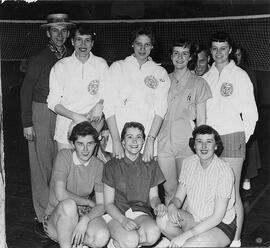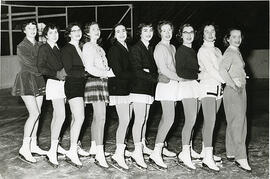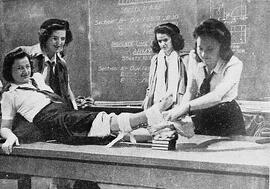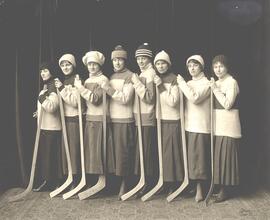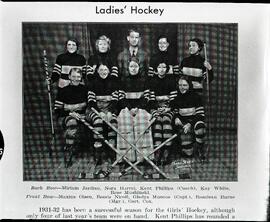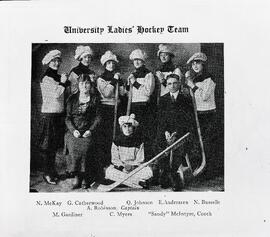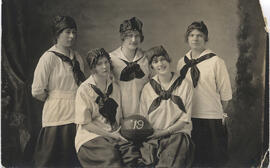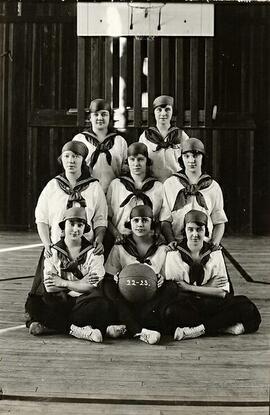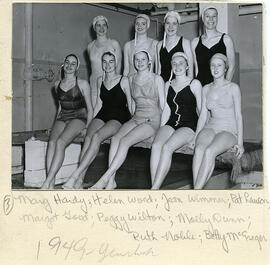Group photo of hockey team members: Annie Maude (Nan) McKay, Ginger Catherwood, Queade Isabel Helen Johnston, Ellen Andreasen, N. Busselle, A. Robinson (capt), Elizabeth Marguerite Gardiner, Cora Ada Myers, Sandy McIntyre (coach).
Bio/Historical Note: Born in Hannah, North Dakota in 1902, Ginevra (Ginger) Irene Catherwood and her family moved to a homestead just outside Scott, Saskatchewan, four years later. Ginger likely learned to skate and play hockey on frozen sloughs. She also played baseball and excelled as pitcher. Catherwood entered the University of Saskatchewan on a scholarship in 1919. It was on the ice, as captain of the Varsity women’s hockey team, where she excelled. Catherwood’s arrival at the U of S coincided with the beginning of inter-varsity competition in women’s hockey. During the 1920-1921 season, playing against the University of Manitoba, Catherwood scored five goals in the first period and finished the game with three more in a 9-1 victory. She netted four goals in the first 11 minutes in a match against the University of Alberta. The final score was Saskatchewan 7 (Catherwood 6) and Alberta 1. The Saskatoon Star-Phoenix declared the U of S team the unofficial champion of university women’s hockey that season (there was no formal league at the time.) Opposing teams quickly learned that Catherwood was a scoring threat every time she had the puck. During the 1921-1922 season, she was hurt in the first period in a game in Edmonton and left the ice. The team squeaked out a 2-1 win. She was still nursing her injury in the next game against Manitoba and played defence in a 2-2 tie. Catherwood graduated with a three-year Arts degree in 1922. After attending Normal School in Saskatoon, she found work as a teacher in the Plenty, Saskatchewan district. Then in 1928, her sister Ethel won Olympic gold in high jump and Ginger was called upon by their family to chaperone her during her Canadian travels. Ginger was rumoured to have accompanied Ethel when she left Canada for the United States sometime around 1932. Ginger Catherwood later married English-born Charles Mitchell in Toronto in the fall of 1933.

